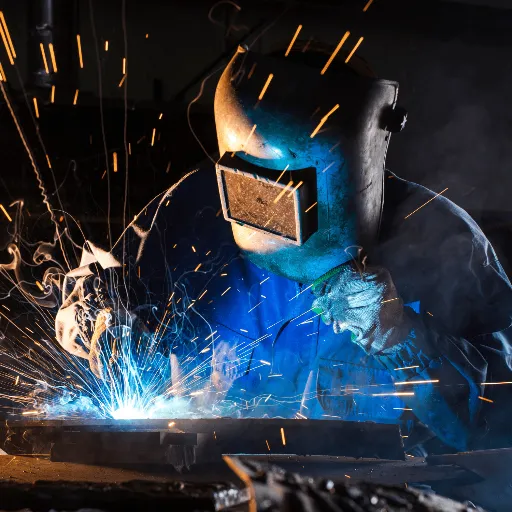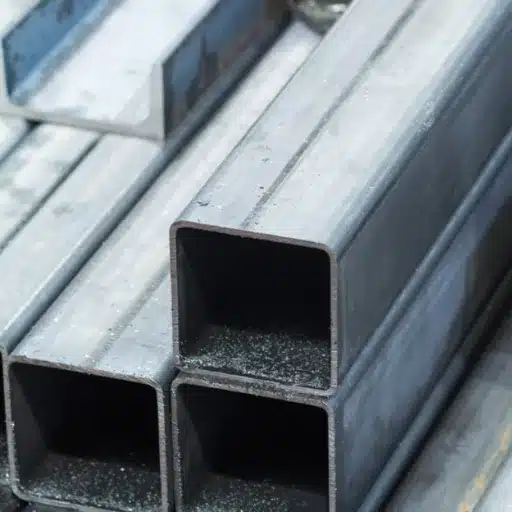Welding is an essential process for construction, manufacturing, automotive, and aerospace industries. However, welding poses significant hazards, with welding fumes being one of the most serious concerns. These fumes, which include welding materials and contaminants in metal dust and vapors, are extremely hazardous to human health if proper safety measures are not followed.
This comprehensive guide explores the hidden risks of welding fumes, health effects, and essential knowledge for protecting workers in this vital field.
Introduction to Welding Hazards
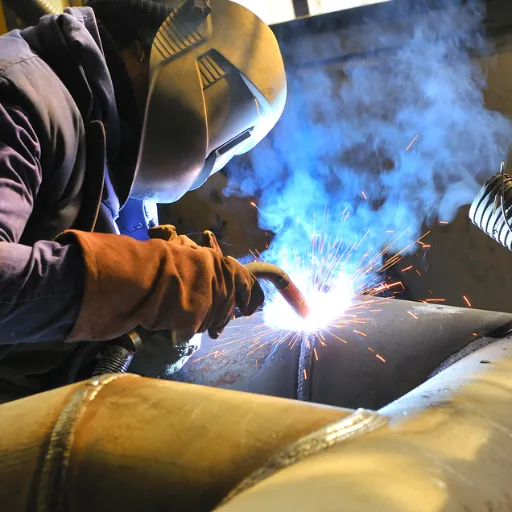
Welding is a skilled trade that can be hazardous to health if safety standards are not maintained. Understanding the hazards in welding environments, particularly the harmful fumes generated during processes like stainless steel welding, is critical for worker safety.
Common Hazards in Welding Processes
Major Welding Hazards Include:
- Toxic fumes and gases – containing hazardous substances like manganese and hexavalent chromium
- Intense UV radiation – from welding arcs causing “arc eye” (corneal burns)
- Electrical shock – majority of welding fatalities according to NIOSH
- Burns – from hot materials and equipment
- Fire and explosion risks – due to flammable materials and poor ventilation
| Hazard Type | Health Impact | Prevention Method | Statistics/Standards |
|---|---|---|---|
| Respiratory Hazards | Chronic bronchitis, lung cancer, respiratory diseases | Proper ventilation, respirators | IARC: Welding fumes classified as Group 1 carcinogens |
| UV Radiation | Arc eye, corneal burns, skin damage | ANSI-approved helmets and shields | AWS standards for eye protection |
| Electrical Shock | Burns, cardiac arrest, death | Proper grounding, dry conditions | NIOSH: Leading cause of welding fatalities |
| Fire/Explosion | Burns, property damage, death | Proper storage, ventilation setup | Improper storage major contributing factor |
The Critical Importance of Welding Safety
Key Safety Statistics:
- OSHA reports: Thousands of workers annually suffer burns and eye injuries from UV radiation
- IARC Classification: Welding fumes rated as carcinogenic to humans
- Risk Reduction: Industries following strict safety protocols reduce unsafe exposures by up to 90%
- Health Impact: Sustained exposure without proper protection leads to chronic illnesses
Modern Safety Technologies
- Automated welding systems – reducing human exposure to hazardous environments
- Robotic welders – improving precision while minimizing worker risk
- Laser-assisted welding – significantly reducing fume generation
- Real-time air quality monitors – enabling better exposure control
Toxic Substances in Welding Fumes
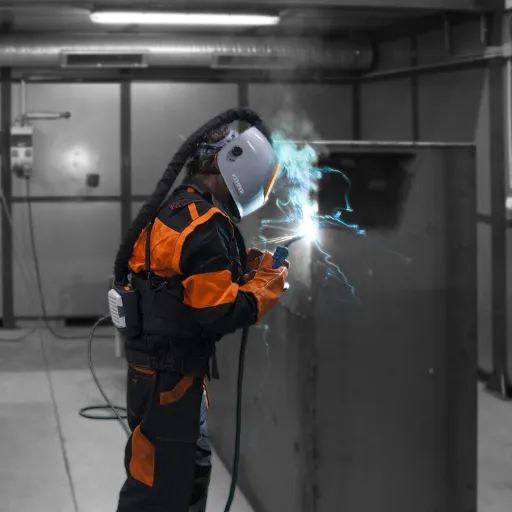
Welding fumes contain numerous toxic substances that pose serious health risks when inhaled. Understanding these hazardous materials is essential for implementing proper safety measures.
Primary Toxic Components
| Substance | Common Sources | Health Effects | OSHA Exposure Limits |
|---|---|---|---|
| Manganese | Steel, stainless steel welding | Neurological damage, Parkinson’s-like symptoms | 5 mg/m³ ceiling concentration |
| Hexavalent Chromium | Stainless steel, chromate paints | Lung cancer, respiratory diseases, skin irritation | 5 µg/m³ (8-hour TWA) |
| Nickel | Stainless steel, nickel alloys | Respiratory irritation, potential carcinogen | 1 mg/m³ (8-hour TWA) |
| Zinc Oxide | Galvanized steel welding | Metal fume fever | 5 mg/m³ (8-hour TWA) |
Manganese Exposure Risks
Critical Health Alert: Manganese is essential for body functions, but excessive inhalation during welding can cause severe neurological damage.
Manganese Health Impact Details:
- Target System: Central nervous system
- Primary Condition: Manganism – irreversible neurological condition
- Symptoms: Tremors, muscle rigidity, coordination problems
- Risk Factor: Welders have 3x increased risk of motor function impairments
- Exposure Concern: Adverse effects reported even below OSHA limits with prolonged exposure
Manganese Protection Strategies:
- Install effective ventilation systems
- Use high-efficiency respirators
- Conduct regular air quality monitoring
- Provide periodic neurological assessments for welders
- Implement medical surveillance programs
Hexavalent Chromium: The Silent Killer
Carcinogen Alert: Hexavalent chromium (Cr(VI)) is a known human carcinogen that can cause lung cancer, nasal and sinus cancers, and severe respiratory diseases.
Chromium Exposure Sources:
- Welding fumes from stainless steel
- Paints containing chromates
- Metal electroplating processes
- Cutting operations on chrome-containing materials
| Exposure Route | Health Effects | Prevention Methods | Environmental Impact |
|---|---|---|---|
| Inhalation | Lung cancer, respiratory diseases | Local exhaust ventilation, respirators | Airborne contamination |
| Skin Contact | Irritation, ulceration, sensitization | Protective gloves, proper hygiene | Surface contamination |
| Ingestion | Gastrointestinal effects | Hand washing, no eating in work areas | Groundwater contamination risk |
Health Risks and Occupational Diseases
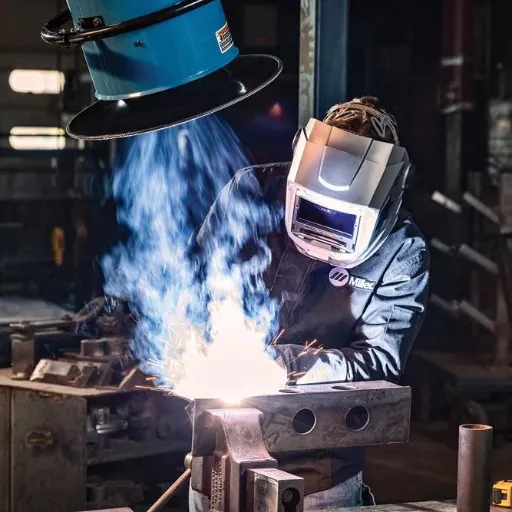
Respiratory Health Effects
IARC Classification: Welding fumes are classified as Group 1 carcinogens, meaning they definitively cause cancer in humans, particularly lung cancer.
Respiratory Disease Statistics:
- Occupational Asthma: 20-40% of welders develop some form of respiratory impairment
- COPD Risk: Welders have 40% higher chances of developing chronic obstructive pulmonary disease
- Lung Function: Significant decline observed with prolonged exposure
- Cancer Risk: 16% increased lung cancer risk after 20+ years of exposure
| Condition | Onset Time | Symptoms | Risk Factors | Prevention |
|---|---|---|---|---|
| Metal Fume Fever | 4-12 hours post-exposure | Chills, fever, muscle aches, nausea, metallic taste | Galvanized steel welding, zinc exposure | Adequate ventilation, PPE |
| Occupational Asthma | Weeks to years | Wheezing, shortness of breath, chest tightness | Prolonged fume exposure, sensitization | Respiratory protection, exposure monitoring |
| Chronic Bronchitis | Months to years | Persistent cough, sputum production | Long-term particulate exposure | Engineering controls, medical surveillance |
| Pneumoconiosis (“Welder’s Lung”) |
Years to decades | Progressive breathing difficulty, lung scarring | Chronic inhalation of metal particles | Strict exposure limits, regular health screenings |
Metal Fume Fever: The Immediate Threat
Metal Fume Fever Characteristics:
- Cause: Inhaling fine metal oxide fumes (especially zinc)
- Onset: 4-12 hours after exposure
- Duration: 24-48 hours after removal from exposure
- Recurrence: Can occur with repeated exposures
- Risk: Most common with galvanized steel welding
Long-term Cancer Risks
Cancer Risk Data:
- IARC Designation: Welding fumes and UV radiation classified as Group 1 carcinogens
- Lung Cancer: 16% increased risk after 20+ years of exposure
- High-Risk Exposures: Stainless steel welding with hexavalent chromium
- Contributing Factors: Poor ventilation, inadequate PPE, prolonged exposure
Preventive Measures and Safety Practices
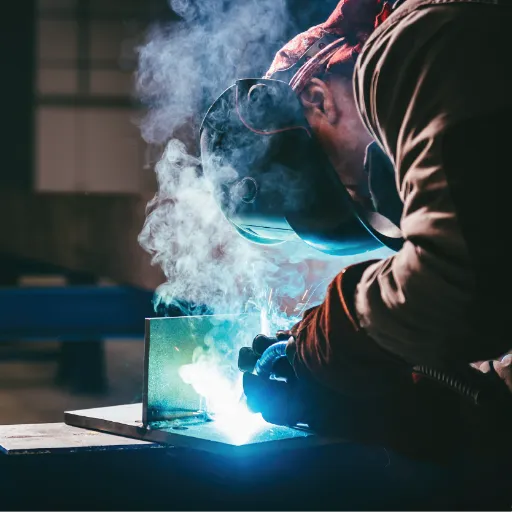
Personal Protective Equipment (PPE) Requirements
PPE Effectiveness: Proper implementation of PPE in hazardous industries has reduced workplace injuries by 37% and illnesses by 33% according to OSHA data.
| PPE Type | Protection Level | Application | Compliance Rate Impact |
|---|---|---|---|
| Respirators | 95% airborne toxin blocking | Fume and particulate protection | Critical for respiratory safety |
| Nitrile Gloves | 98% chemical resistance | Hand protection from chemicals | Superior to latex alternatives |
| Protective Eyewear/Helmets | UV and impact protection | Eye and face protection | ANSI approval required |
| Protective Suits | Full body coverage | High-risk environments | Environment-specific selection |
PPE Training and Implementation
Critical PPE Facts:
- Failure Rate: 40% of PPE failures caused by incorrect fit or non-compliance
- Training Impact: Proper training increases compliance rates by 60%
- Requirements: Selection, wearing, maintenance, and disposal training essential
- Ongoing Needs: Refresher training, fit-testing, maintenance schedules required
Ventilation and Fume Extraction Systems
Proper ventilation and efficient fume extraction systems are paramount for maintaining workplace safety where hazardous fumes, dust, or airborne contaminants are present.
Ventilation System Effectiveness:
| System Type | Efficiency | Application | Maintenance Requirements |
|---|---|---|---|
| Local Exhaust Ventilation (LEV) | Captures contaminants at source | Point-of-generation control | Regular airflow testing |
| HEPA Filter Systems | 99.97% particulate removal (≥0.3 microns) | Advanced fume extraction | Filter replacement per manufacturer schedule |
| General Ventilation | Dilutes airborne contaminants | Overall air quality improvement | Regular inspection and cleaning |
Ventilation Impact Statistics:
- OSHA Data: Inadequate ventilation causes 30% of air quality-related workplace illnesses
- Risk Reduction: Proper ventilation significantly reduces health risks
- Compliance: Essential for meeting emission control standards
- Environmental Benefit: Protects both workers and environment
Occupational Exposure Limits (OELs)
Occupational Exposure Limits are critical guidelines designed to protect workers from hazardous substance exposure. These limits are established through comprehensive toxicological assessment and human impact studies.
Types of Exposure Limits:
| Limit Type | Authority | Purpose | Example (Welding Fumes) |
|---|---|---|---|
| Permissible Exposure Limits (PELs) | OSHA | Legal regulatory standards | 5 mg/m³ (8-hour TWA) |
| Threshold Limit Values (TLVs) | ACGIH | Advisory guidelines | Manganese: 0.02 mg/m³ TWA (respirable) |
| Recommended Exposure Limits (RELs) | NIOSH | Research-based recommendations | Varies by specific substance |
Important OEL Considerations:
- Research Findings: Even concentrations below current limits may pose long-term health risks
- Stringent Standards: ACGIH often suggests more protective limits than OSHA
- Compliance Benefits: Workplaces meeting OELs show 15% decrease in occupational diseases
- Technology Support: Real-time monitors and advanced PPE aid compliance
Advanced Safety Technologies and Monitoring
Modern Safety Equipment:
- Real-time Air Quality Monitors – continuous exposure tracking
- Advanced Respirator Technology – improved filtration and comfort
- Automated Exposure Alerts – immediate warning systems
- Digital Training Systems – enhanced safety education
Reference Sources
- National Center for Biotechnology Information (NCBI)
Article: Welding fumes composition and their effects on blood
This source discusses the composition of welding fumes, including heavy metals and other toxic substances, and their health impacts.
Read more here - Arc Captain Blog
Article: What Toxic Substance is Released When Welding Stainless Steel
This blog explains the dangers of hexavalent chromium, a toxic compound released during welding, and its implications for health and safety.
Read more here - RoboVent Blog
Article: Welding Health Risks and How to Address Them
This source provides insights into the health risks associated with welding fumes and offers strategies for mitigating these risks in industrial settings.
Read more here
Frequently Asked Questions (FAQs)
Exposure to welding fumes can lead to multiple health effects, particularly affecting the respiratory system. Symptoms include coughing, wheezing, and shortness of breath. Prolonged inhalation may cause chronic respiratory diseases, lung damage, and systemic effects on organs including the kidneys.
Welding fumes contain varying substances depending on materials used. Common hazardous substances include:
- Manganese – neurological effects
- Nickel – respiratory irritation, potential carcinogen
- Chromium (especially hexavalent) – lung cancer risk
- Carbon monoxide – oxygen displacement
- Zinc oxide – metal fume fever
Manganese exposure is particularly concerning as it can cause neurological effects, including motor symptoms resembling Parkinson’s disease. Manganese content in welding materials greatly influences welder exposure, making it crucial to monitor and adhere to occupational exposure limits.
Various welding processes produce different toxic fume compositions:
- Gas Metal Arc Welding (GMAW) – produces specific metallic fumes
- Stainless Steel Welding – generates hexavalent chromium
- Galvanized Steel Welding – creates zinc oxide fumes
- Each process requires specific safety awareness and protection measures
Proper prevention measures include:
- Ventilation Systems – local exhaust ventilation and general ventilation
- Personal Protective Equipment (PPE) – appropriate respirators and protective gear
- Fume Extraction Systems – point-of-source capture
- Work Positioning – staying out of fume plumes
- Regular Monitoring – air quality assessment
Exposure limits vary by jurisdiction and specific substances:
- General Welding Fumes: OSHA PEL of 5 mg/m³ (8-hour TWA)
- Manganese: 5 mg/m³ ceiling concentration (OSHA)
- Hexavalent Chromium: 5 µg/m³ (8-hour TWA)
- Local Regulations: May have more stringent requirements
- Best Practice: Consult local occupational safety regulations
Key Takeaways for Welding Safety:
- Recognition: Understand that welding fumes are serious health hazards
- Protection: Implement comprehensive safety measures including PPE and ventilation
- Monitoring: Regular air quality assessment and health surveillance
- Training: Ongoing safety education for all personnel
- Compliance: Adhere to all occupational exposure limits and safety standards
- Technology: Utilize modern safety equipment and monitoring systems

